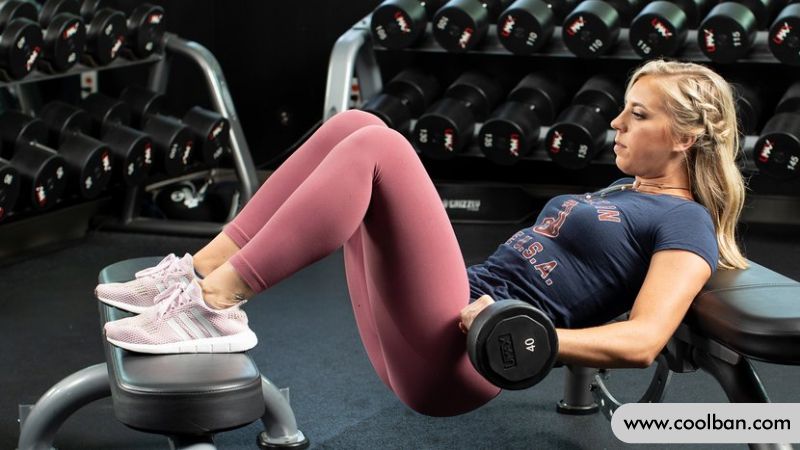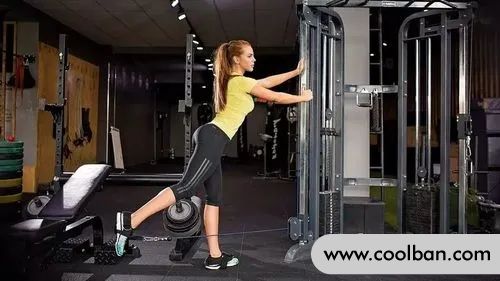Why Abs Training Can't Lose Belly Fat?
2022-08-23
Many friends will think of losing a big belly through abdominal training, and of course they will do the same. But looking at the results, it didn't work that well because abdominal training targets abs, not belly fat. To lose belly fat, you need a calorie deficit.
Key factors for fat loss
The first thing to say is that no matter what part of the fat you want to lose, you have to start from the whole body, which is fat loss. The core element of fat loss is the calorie deficit. In terms of method, it is nothing more than reducing diet and increasing exercise, or a combination of the two. If you don't have higher requirements and just want to lose weight, it doesn't matter which method you choose, as long as the method you choose will make you thin.
Of course, from a health and physical point of view, the most recommended method is a reasonable diet + regular exercise, that is, reducing part of the calorie intake through diet, and then increasing part of the consumption through exercise. It's the best if you can stick with it.
All in all, fat loss is to achieve daily calorie intake < calorie expenditure, so that no matter what part of the fat you want to lose, you can lose weight.

What is the difference between hip and leg training and abdominal training
Since it is said that fat loss is a systematic process, no matter which part you want to lose, you must start from the whole. From an ab training standpoint, losing belly fat doesn't make much sense. From this point of view, butt and leg training does not lose fat in the buttocks and legs. Why is the result really different from what I said before? This starts with glute and leg training, or the difference between glute and leg training and abdominal training.
1. From the perspective of training goals
The abdomen is a group of small muscles. From the action point of view, it is basically a relatively isolated action. Although abdominal training can form targeted stimulation to the abdominal muscles, it has little stimulation to other parts;
The hips and legs are large muscle groups. From the action point of view, most of them are compound actions. Different parts of your body are involved when you work your glutes and legs.
Therefore, from the perspective of the overall training effect, hip and leg training can mobilize the muscles of the whole body to participate in it, thereby improving the overall training efficiency and stimulating the growth of the muscles of the whole body. The increase in muscle mass is an effective means to stabilize or improve the basal metabolism, and a relatively high basal metabolism means that this part consumes more, so it can be easier to lose weight and control weight.

2. From the perspective of consumption
If your daily energy intake can be effectively controlled, at least you can achieve a basic balance between calorie intake and consumption. In this case, which one burns more calories, abs or butt and legs? So, what makes the calorie difference possible? The answer, of course, is glute and leg training.
Abdominal training, although the whole training process is not easy, and it is not easy to do some simple movements, but the overall consumption is relatively small. For fat loss, you want to open the calorie gap with abdominal training. Not too possible.
Glute and leg training are different. Speaking of hip and leg training, the consumption is still very large, because there are many muscles involved in the hip and leg training process, and the training intensity is not low or even high. Of course, in order to allow the muscles of the hips and legs to form relatively sufficient stimulation, the training time should also be guaranteed. Regardless of the intensity of the exercise, the duration of the exercise, or the amount of muscle involved in the exercise, the training of the buttocks and legs can achieve a good fat-burning effect. So closing the calorie gap with glute and leg training is pretty straightforward.
From the perspective of consumption, the gap between the two is still very obvious. If you have relevant sports experience, it is easy to find gaps. For example, do three glute and leg workouts, with a lower intensity workout in the middle of the glute and leg workout for better rest. Of course, abdominal training is also done, but to a lesser extent. From a personal standpoint, a day without glute and leg work feels almost like no workout.

3. From the perspective of how to lose stubborn fat
Everyone's fat distribution is different, but for women, fat is easy to accumulate in the hips and legs, while for men, it is easy to accumulate in the waist and abdomen, and the fat in these two parts is relatively stubborn, so It's harder to lose fat during the fat loss process.
So, how to lose stubborn fat? The method is to increase the exercise intensity, in addition to ensuring that the general direction remains unchanged, that is, to allow the calorie difference to exist, because high-intensity exercise is more conducive to the decomposition of stubborn fat. Obviously, abdominal training isn't a high-intensity exercise, whether you're working very hard or not; unlike glute training, in general, the glutes and legs aren't low-intensity.
So, by contrast, training your glutes and legs allows you to lose stubborn fat more effectively, so in that sense, training your glutes and legs can help you lose fat in your hips and legs.
Key factors for fat loss
The first thing to say is that no matter what part of the fat you want to lose, you have to start from the whole body, which is fat loss. The core element of fat loss is the calorie deficit. In terms of method, it is nothing more than reducing diet and increasing exercise, or a combination of the two. If you don't have higher requirements and just want to lose weight, it doesn't matter which method you choose, as long as the method you choose will make you thin.
Of course, from a health and physical point of view, the most recommended method is a reasonable diet + regular exercise, that is, reducing part of the calorie intake through diet, and then increasing part of the consumption through exercise. It's the best if you can stick with it.
All in all, fat loss is to achieve daily calorie intake < calorie expenditure, so that no matter what part of the fat you want to lose, you can lose weight.

What is the difference between hip and leg training and abdominal training
Since it is said that fat loss is a systematic process, no matter which part you want to lose, you must start from the whole. From an ab training standpoint, losing belly fat doesn't make much sense. From this point of view, butt and leg training does not lose fat in the buttocks and legs. Why is the result really different from what I said before? This starts with glute and leg training, or the difference between glute and leg training and abdominal training.
1. From the perspective of training goals
The abdomen is a group of small muscles. From the action point of view, it is basically a relatively isolated action. Although abdominal training can form targeted stimulation to the abdominal muscles, it has little stimulation to other parts;
The hips and legs are large muscle groups. From the action point of view, most of them are compound actions. Different parts of your body are involved when you work your glutes and legs.
Therefore, from the perspective of the overall training effect, hip and leg training can mobilize the muscles of the whole body to participate in it, thereby improving the overall training efficiency and stimulating the growth of the muscles of the whole body. The increase in muscle mass is an effective means to stabilize or improve the basal metabolism, and a relatively high basal metabolism means that this part consumes more, so it can be easier to lose weight and control weight.

2. From the perspective of consumption
If your daily energy intake can be effectively controlled, at least you can achieve a basic balance between calorie intake and consumption. In this case, which one burns more calories, abs or butt and legs? So, what makes the calorie difference possible? The answer, of course, is glute and leg training.
Abdominal training, although the whole training process is not easy, and it is not easy to do some simple movements, but the overall consumption is relatively small. For fat loss, you want to open the calorie gap with abdominal training. Not too possible.
Glute and leg training are different. Speaking of hip and leg training, the consumption is still very large, because there are many muscles involved in the hip and leg training process, and the training intensity is not low or even high. Of course, in order to allow the muscles of the hips and legs to form relatively sufficient stimulation, the training time should also be guaranteed. Regardless of the intensity of the exercise, the duration of the exercise, or the amount of muscle involved in the exercise, the training of the buttocks and legs can achieve a good fat-burning effect. So closing the calorie gap with glute and leg training is pretty straightforward.
From the perspective of consumption, the gap between the two is still very obvious. If you have relevant sports experience, it is easy to find gaps. For example, do three glute and leg workouts, with a lower intensity workout in the middle of the glute and leg workout for better rest. Of course, abdominal training is also done, but to a lesser extent. From a personal standpoint, a day without glute and leg work feels almost like no workout.

3. From the perspective of how to lose stubborn fat
Everyone's fat distribution is different, but for women, fat is easy to accumulate in the hips and legs, while for men, it is easy to accumulate in the waist and abdomen, and the fat in these two parts is relatively stubborn, so It's harder to lose fat during the fat loss process.
So, how to lose stubborn fat? The method is to increase the exercise intensity, in addition to ensuring that the general direction remains unchanged, that is, to allow the calorie difference to exist, because high-intensity exercise is more conducive to the decomposition of stubborn fat. Obviously, abdominal training isn't a high-intensity exercise, whether you're working very hard or not; unlike glute training, in general, the glutes and legs aren't low-intensity.
So, by contrast, training your glutes and legs allows you to lose stubborn fat more effectively, so in that sense, training your glutes and legs can help you lose fat in your hips and legs.
